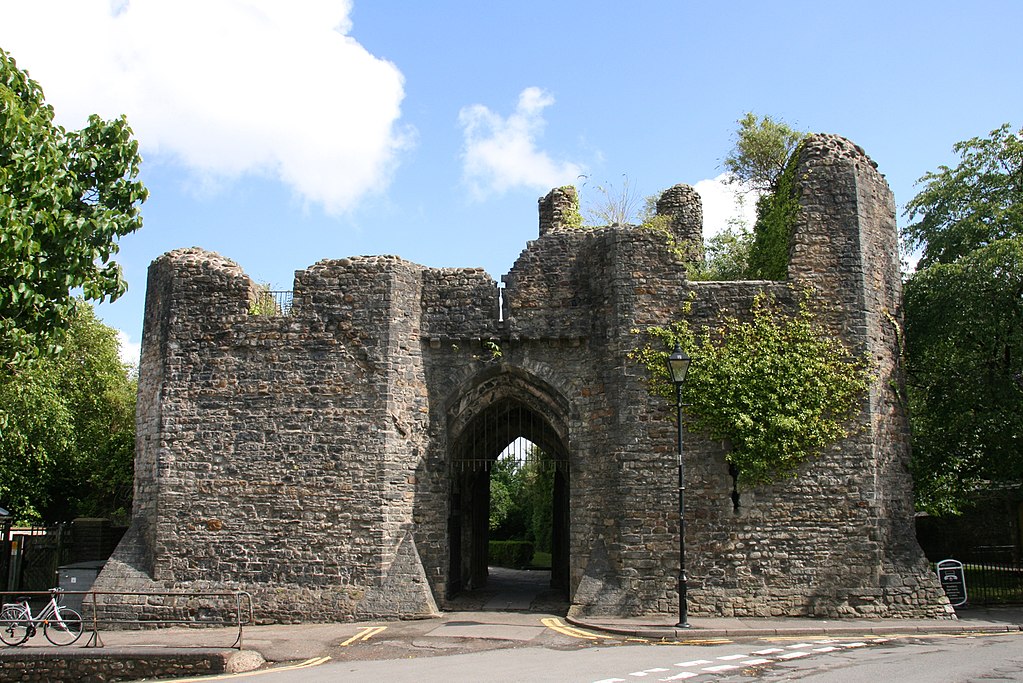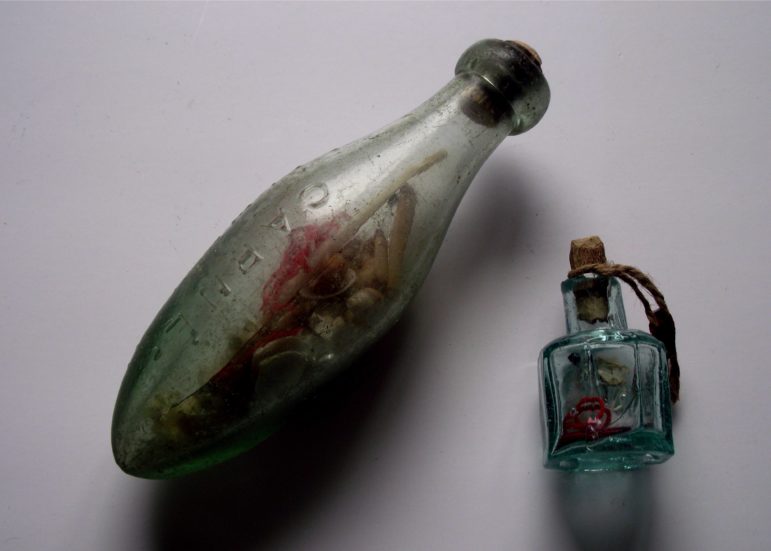UNITED KINGDOM – Archaeological discoveries, some of interest to Pagans and some of wider historical interest, continue to be made across the U.K. this autumn.
Among those discoveries, a Roman military outpost coming to light, the discovery of a witch bottle with American connections, and a medieval building unearthed beneath some public toilets in Llandaff in Wales.
The medieval building in question in Wales, was revealed during a community dig to have stood near the Bishop’s Palace which is a 13th century structure. The building discovered probably dates from around 1450. A fireplace, chequered ceramic floor tiles, animal bones, and horse shoes have been revealed.

Old Bishop’s Palace [Image Credit: Mike Peel, CC BY-SA 4.0]
The dig, which has been undertaken in order to remove the toilet block and turn the area into a community centre, has involved a large number of local schoolchildren, with the aim of getting children more involved in their heritage and its exploration.
The house itself probably belonged to someone of high status, since it used expensive materials such as Bath stone, brought from the other side of the Severn Estuary.
* * *
Across the country, in Northamptonshire, a witch bottle has been found in the birthplace of a woman who relocated to America and became known as a witch.
Angeline Tubbs, known as the Witch of Saratoga, was born around 1761 at the former Star and Garter Inn, in Watford village in Northamptonshire. At the age of 15 she moved to Saratoga Springs in New York, where she told fortunes. She is still the subject of Saratoga ghost tours. The property is currently undergoing roof renovations, which is when the bottle was revealed.
The bottle itself is of a later date: probably 19th century. It was found during roof repairs and contains fish hooks, human teeth, glass and a liquid, which has not yet been identified (although witch bottles were most frequently said to contain urine). Around 300 people were executed for witchcraft in eastern England between 1644 and 1646, until the laws against witchcraft were repealed almost a century later.

Witch bottles [Image credit: Malcolm Lidbury (aka Pinkpasty)]
Glass torpedo bottles, such as the one found in the former inn, date from about 1830 and were intended to hold carbonated drinks.
Dr. Ceri Houlbrook, lecturer in folklore and history at the University of Hertfordshire said: “It’s certainly later than most witch bottles, so sadly not contemporary with Angeline Tubbs, but still a fascinating find.”
The anonymous owner of the former inn is reported as saying “”I will probably hide it away again for someone to find in another 100 years or so.”
* * *
Meanwhile, earlier in the autumn a Roman fort was discovered beneath Exeter bus station. The city was founded in 55 C.E. by the Romans and was the regional capital of the south west. The recently unearthed site is apparently a previously unknown military site, either a fort occupied by an army unit or a defended compound. It contains pottery and coins.
Andrew Pye, an archaeology officer at Exeter city council, said: “This is a very important, and completely unexpected, discovery, in an area that has been heavily changed by previous postwar redevelopment. This discovery of yet another new Roman fort within the city does demonstrate, along with that of the fortress and baths back in the 1970s and of several other new major military sites in the last decade, just how pivotal a role the Exeter area played in the first decades of the Roman conquest and subjugation of Britain.”
Derek Evans, the fieldwork project manager at Cotswold Archaeology’s Exeter office, said: “The unexpected nature of this discovery and the significance of uncovering previously undocumented Roman military features in this area of the city have made this a challenging and interesting project. We look forward to undertaking further analysis of the finds and other material recovered during our works and refining the story of the site’s history.”
* * *
It’s not such positive news up in Scotland, however, where police are currently investigating damage to an ancient Iron Age tower known as a broch.
Police were alerted in October to the removal of some of the stones of the broch, on the little uninhabited island of Dun Torcuill in North Uist, and thus potential damage to the monument. Brochs, found across the Highlands, the Western Isles and Orkney, are some of Scotland’s oldest monuments.
The Scots police are currently appealing for information.
* * *
At another broch site, finds reveal clues to Iron Age occupation of Scotland. A hollowed out whale vertebra, used as a casket, was discovered near a broch at South Ronaldsay.

Fin whale [Image credit: Aqqa Rosing-Asvid, CC BY 2.0 ]
Dr. Martin Carruthers from the UHI archaeology institute at Orkney College says that inside “…we found a human jawbone, and two newborn lambs… it was deposited we think in quite a formal manner, just outside the door of the broch at the time it was going out of use.”
Two red deer antlers were jammed into place alongside the backbone, and held in place with a quern stone. Whether this has ritual significance is not known but there seems to have been a substantial use of whalebone throughout the island (the casket is made of the bone of a giant fin whale).
It’s not known whether these early peoples would have hunted the whale, or scavenged carcasses washed up on the shores of the island. Scientists from St Mary’s University Nova Scotia and Western Carolina University are currently undertaking a project on the use of whalebone in the region.
The Wild Hunt is not responsible for links to external content.
To join a conversation on this post:
Visit our The Wild Hunt subreddit! Point your favorite browser to https://www.reddit.com/r/The_Wild_Hunt_News/, then click “JOIN”. Make sure to click the bell, too, to be notified of new articles posted to our subreddit.